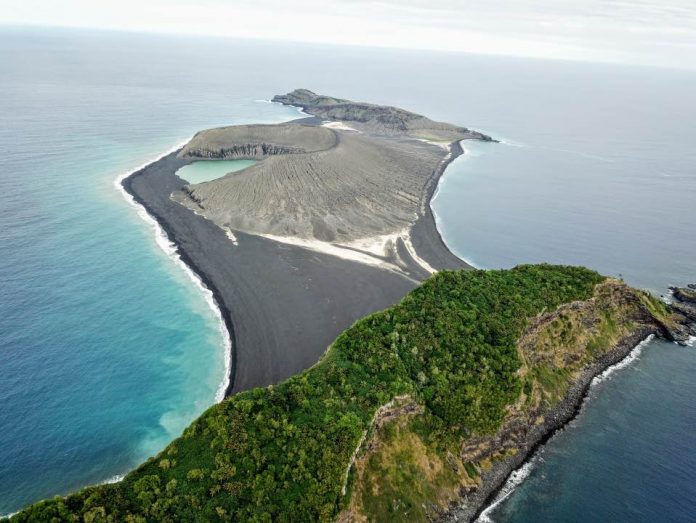A mysterious island that formed four years ago in the southern Pacific Ocean appears to be here to stay, according to NASA scientists..
The miracle outcrop known as Hunga Tonga has only existed for four years, yet creatures including hundreds of seabirds and flowering plants whose seeds were dropped there in bird poo.
Hunga Tonga emerged from a hidden underwater volcano lodged between two existing islands of the Kingdom of Tonga in the South Pacific.
It still has no official name, but locals have branded it Hunga Tonga-Hunga Ha’apai, or “Hunga Tonga” for short.
The island is only the third volcanic pop-up like this to have arisen in the last 150 years, and Nasa has been attempting to uncovers its mysteries since it arose from the sea in 2015.
Most research has involved taking snaps from satellites or aircraft, but space boffins recently got a rare chance to explore Hunga Tonga on foot.
“We were all like giddy school children,” remote sensing scientist Dan Slayback from NASA’s Goddard Space Flight Centre told the space agency’s Earth Expeditions blog.
“Most of it is this black gravel, I won’t call it sand – pea sized gravel – and we’re mostly wearing sandals so it’s pretty painful because it gets under your foot.”
On the island, experts took GPS measurements and used drone surveys to map the island’s landscape.
They found an army of seabirds called sooty terns nesting in Hunga Tonga’s cliff gullies, as well as flowering plants that they think were seeded by bird droppings.
A solitary barn owl even passed overhead while they were there.
Researchers said the trip shed new light on rare volcanic islands – though they don’t know how long Hunga Tonga will last before it’s eroded to nothing.
“The island is eroding by rainfall much more quickly than I’d imagined,” Dr Slayback said.
“We were focussed on the erosion on the south coast where the waves are crashing down, which is going on. It’s just that the whole island is going down, too.”
Researchers warned last year of an underwater supervolcano that threatens to blow and kill 100million people after they found a six-mile-wide lava dome near Japan.
A similar underwater eruption wiped out 90% of Earth’s ocean species in an event known as the Great Dying 250 million years ago.
















???????? The miracle outcrop known as Hunga Tonga has only existed for four years, yet creatures including hundreds of seabirds and flowering plants whose seeds were dropped there in bird poo. ???????????
I, for one, do not believe for one second that the article above was written by James M. Patterson. If Mr. Patterson wrote an article with so many grammatical errors, his publisher would have to hold a press conference to explain this literary giant was under the influence of drugs and alcohol at the time! I know it’s nice to name drop to give people the impression that something was professionally produced, but please do not try and dupe your readers with this nonsense. Time to get a grip on reality.
It’s ro see the drop in sea levels around the globe due to global cooling and the Grand Solar Minimum.